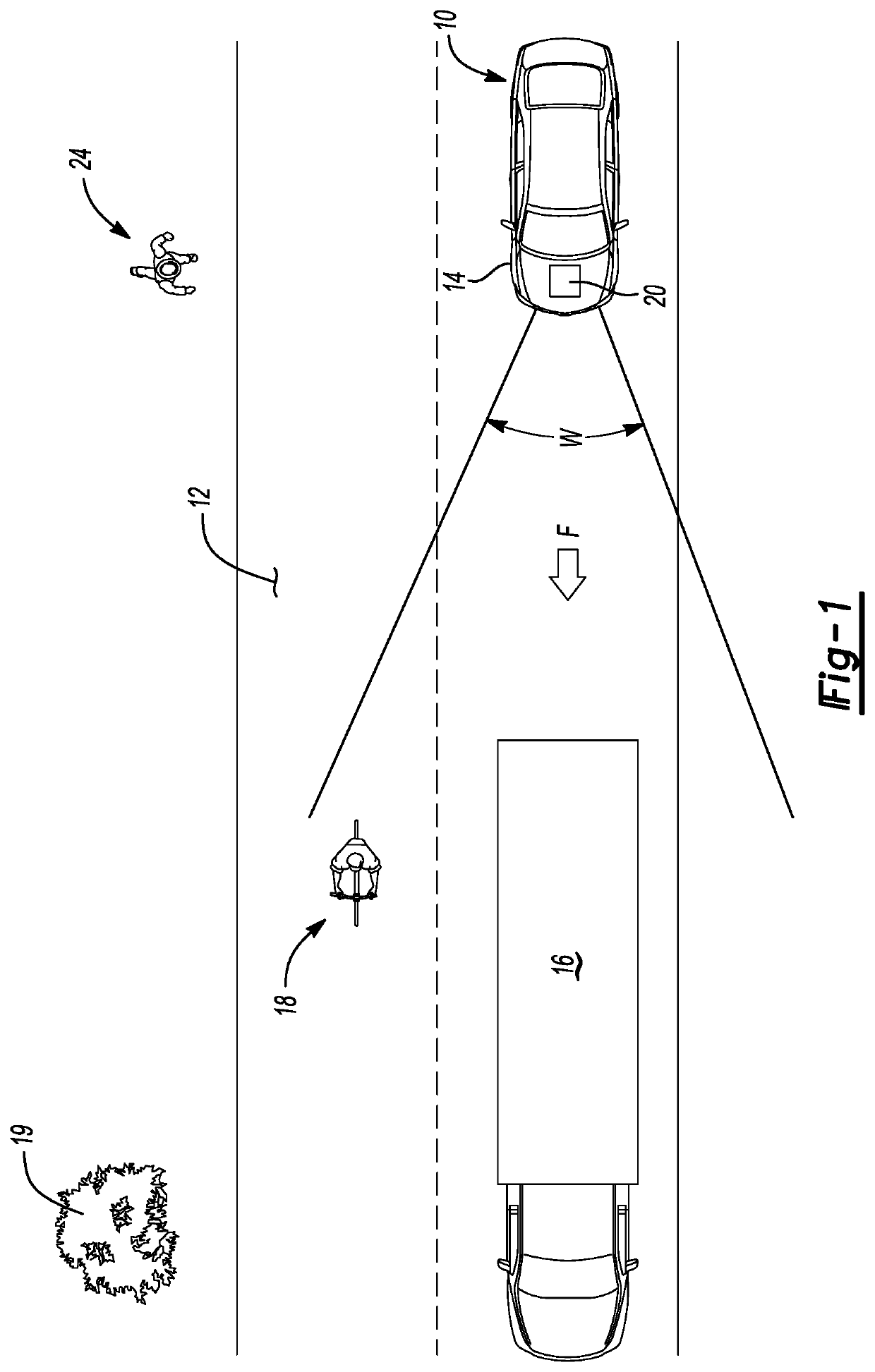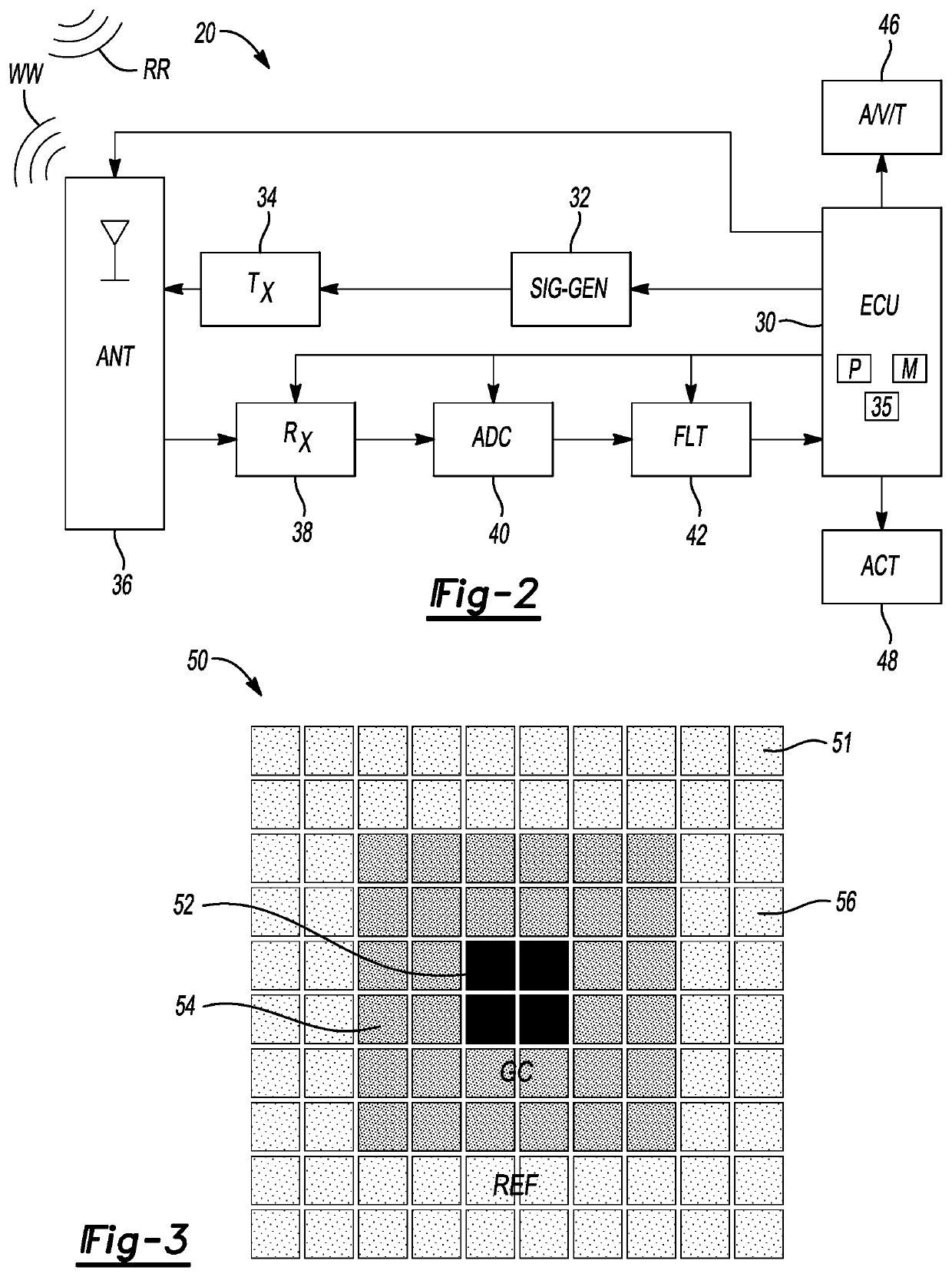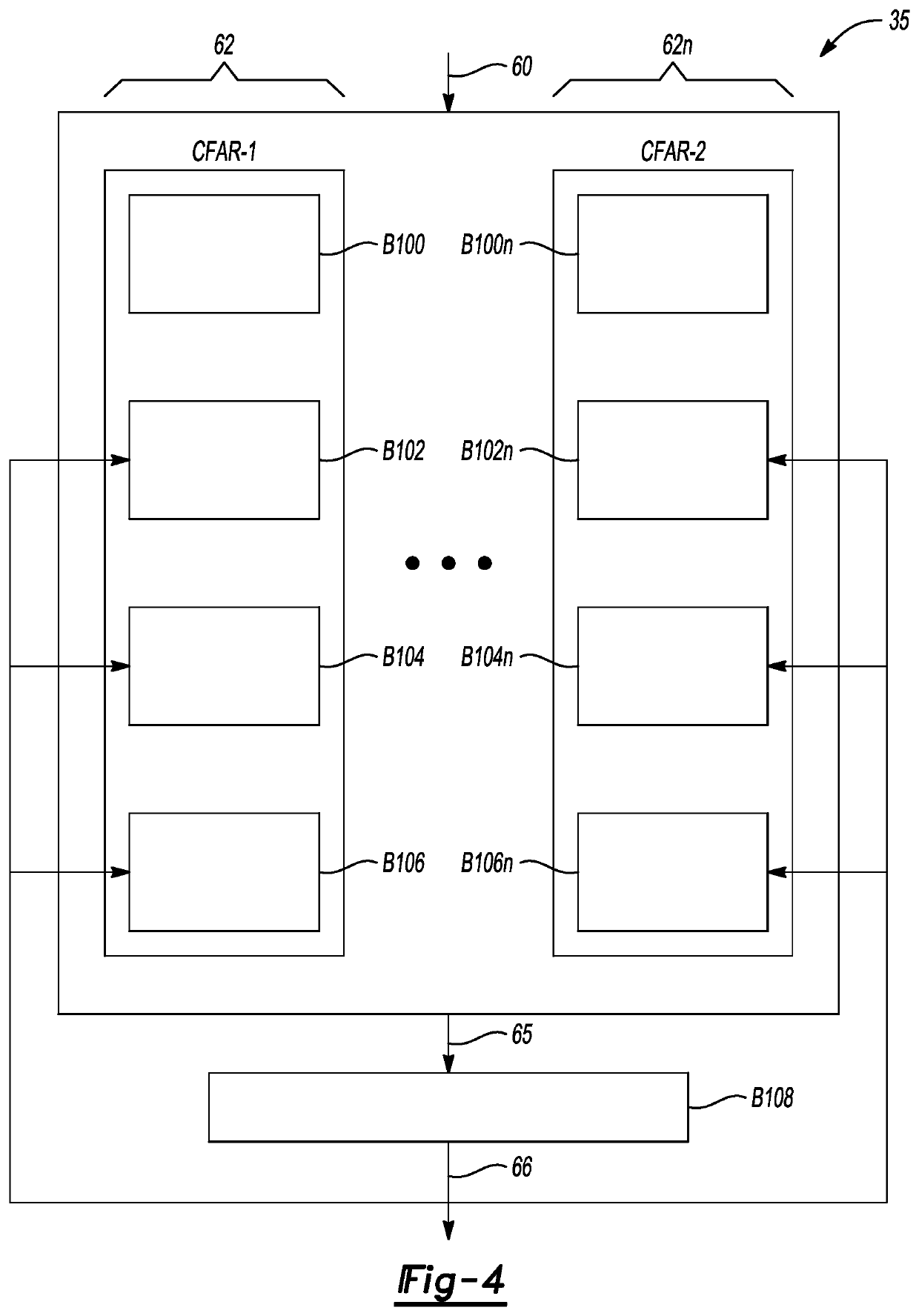Extended target-matched cfar detector
a cfar detector and target-matched technology, applied in the field of extended target-matched cfar detectors, can solve the problems of less than optimal detection performance of such cfar detectors, and achieve the effect of increasing the overall detection performan
- Summary
- Abstract
- Description
- Claims
- Application Information
AI Technical Summary
Benefits of technology
Problems solved by technology
Method used
Image
Examples
Embodiment Construction
[0022]Referring to the drawings, wherein like reference numbers refer to like components, a host vehicle 10 is depicted schematically in FIG. 1. The host vehicle 10 in the illustrated embodiment is a motor vehicle. However, those of ordinary skill in the art will appreciate that other vehicles may benefit from the present teachings, including but not limited to watercraft, aircraft, and rail vehicles, or other mobile systems such as robots or mobile platforms. Stationary host systems may also benefit from the present teachings. For illustrative consistency, the host vehicle 10 will be described hereinafter as a motor vehicle without limiting the scope of the disclosure to such an embodiment.
[0023]The host vehicle 10 includes a vehicle body 14 and a radar circuit 20, an example embodiment of the latter being described in detail below with reference to FIG. 2. The host vehicle 10, when optionally configured as a motor vehicle as shown, may travel in the general direction of arrow F al...
PUM
 Login to View More
Login to View More Abstract
Description
Claims
Application Information
 Login to View More
Login to View More - R&D
- Intellectual Property
- Life Sciences
- Materials
- Tech Scout
- Unparalleled Data Quality
- Higher Quality Content
- 60% Fewer Hallucinations
Browse by: Latest US Patents, China's latest patents, Technical Efficacy Thesaurus, Application Domain, Technology Topic, Popular Technical Reports.
© 2025 PatSnap. All rights reserved.Legal|Privacy policy|Modern Slavery Act Transparency Statement|Sitemap|About US| Contact US: help@patsnap.com



